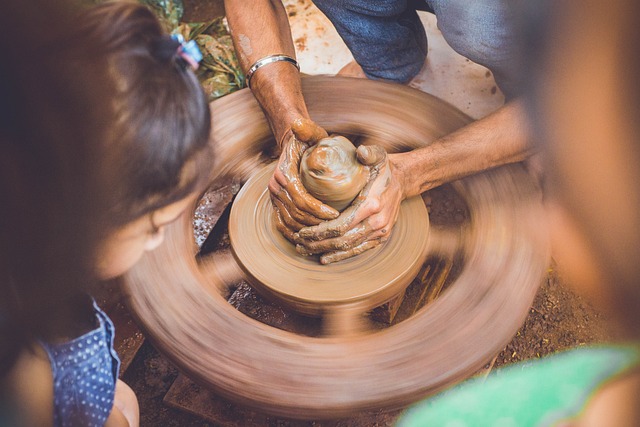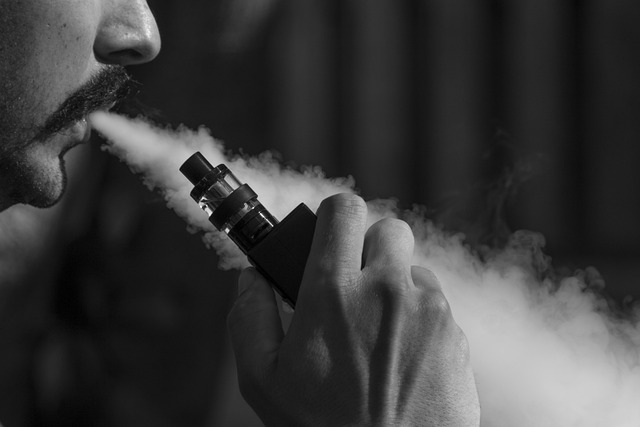Can You Smoke After Tooth Extraction? Expert Advice
Smoking and dental procedures have long been an incompatible duo, with the health implications of tobacco use widely known. But what about after a tooth extraction? Can you safely indulge in a smoke without jeopardizing your recovery? This burning question has sparked numerous debates among patients, prompting us to consult dental experts who can provide us with definitive answers. In this article, we delve into the world of post-extraction smoking, uncovering the potential risks, exploring the impact on healing, and offering expert advice to ensure your oral health remains a top priority. So, grab your seat, take a deep breath, and let us guide you through this crucial topic with confidence and clarity.
1. Understanding the Importance of Post-Tooth Extraction Care
After a tooth extraction, proper care is essential to ensure a smooth and speedy recovery. Ignoring the importance of post-tooth extraction care can lead to complications, such as infection, prolonged pain, and delayed healing. By following these guidelines, you can minimize discomfort and promote optimal healing:
- Keep the area clean: Gently rinse your mouth with warm saltwater to keep the extraction site clean. Avoid using mouthwash or brushing the area for the first 24 hours to prevent further irritation.
- Control bleeding: Bite down on a clean piece of gauze or a tea bag to help stop any bleeding. Apply gentle pressure for about 30 minutes. If bleeding persists, contact your dentist.
- Reduce swelling: Apply an ice pack or cold compress to the affected area for 10-15 minutes at a time. This will help minimize swelling and alleviate discomfort.
Additionally, it is crucial to follow these post-extraction care instructions:
- Take prescribed medications: If your dentist has prescribed any medication, such as painkillers or antibiotics, take them as directed to manage pain and prevent infection.
- Avoid smoking and alcohol consumption: Smoking and alcohol can delay the healing process and increase the risk of complications. It’s best to abstain from these habits until you have fully recovered.
- Stick to soft foods: For the first few days, opt for soft and easily chewable foods to avoid causing irritation or damage to the extraction site. Gradually reintroduce solid foods as the area heals.
2. Debunking the Myth: Can You Smoke After Tooth Extraction?
After undergoing a tooth extraction, it is natural to have concerns about certain activities, such as smoking. However, there is a common misconception that smoking is harmless or even beneficial for the healing process. In reality, smoking after tooth extraction can have severe consequences and hinder the recovery process.
Here are a few reasons why smoking should be avoided after a tooth extraction:
- Delayed Healing: Smoking introduces harmful toxins into the body, which can impair blood circulation and delay the healing process. This can lead to prolonged pain, swelling, and a higher risk of infection.
- Dry Socket: One of the most significant risks of smoking after tooth extraction is the development of dry socket. This painful condition occurs when the blood clot that forms in the socket is dislodged or dissolved, exposing the bone and nerves. Smoking increases the chances of developing dry socket, leading to intense pain and the need for additional dental treatment.
- Infection: Smoking weakens the immune system and makes it harder for the body to fight off infections. After a tooth extraction, the open socket is susceptible to bacteria, and smoking can significantly increase the risk of developing an infection.
It is crucial to prioritize your oral health and give your body the best chance to heal properly after a tooth extraction. Avoiding smoking and other tobacco products is essential to promote a smooth and successful recovery.

3. Expert Advice: The Dangers of Smoking After Tooth Extraction
After undergoing a tooth extraction, it is crucial to take proper care of your mouth to ensure a smooth and speedy recovery. One vital aspect of this recovery process is to avoid smoking, as it poses significant dangers that can impede healing and lead to complications. Here are some expert insights into why smoking after tooth extraction is strongly discouraged:
1. Delayed Healing: Smoking can significantly delay the healing process after a tooth extraction. The chemicals present in cigarettes, such as nicotine and tar, restrict blood flow and decrease the oxygen supply to the surgical site. As a result, the formation of new blood vessels, essential for healing, is impaired. This delay in healing can lead to prolonged pain and discomfort, as well as an increased risk of infection.
2. Dry Socket: One of the most common and painful complications that can arise from smoking after a tooth extraction is the development of dry socket. This condition occurs when the blood clot that forms in the extraction site becomes dislodged or dissolves prematurely, leaving the underlying bone and nerves exposed. Smoking introduces heat and toxins to the oral cavity, which can disrupt the formation of the blood clot, increasing the likelihood of dry socket. This condition can be extremely painful and may require additional treatment, such as medication or further dental intervention, to alleviate the discomfort.

4. The Healing Process: How Smoking Impacts Post-Extraction Recovery
Smoking has a significant impact on the healing process following tooth extraction. It is crucial to understand how smoking affects post-extraction recovery to make informed decisions about your oral health. Here are some key points to consider:
- Delayed Healing: Smoking slows down the healing process by constricting blood vessels, reducing blood flow, and limiting the amount of oxygen and nutrients that reach the extraction site. As a result, the formation of a blood clot, which is essential for proper healing, is compromised.
- Increased Risk of Infection: Smoking weakens the immune system, making smokers more susceptible to infections. The extraction site is particularly vulnerable to bacteria and other harmful microorganisms, increasing the risk of developing an infection. An infected socket can lead to severe pain, delayed healing, and even complications.
Additionally, smoking also contributes to other post-extraction complications, including:
- Dry Socket: Smoking is a known risk factor for developing dry socket, a condition in which the blood clot dislodges or dissolves prematurely, exposing the underlying bone and nerves. This can cause excruciating pain and may require additional treatment.
- Impaired Bone Regeneration: The chemicals in tobacco smoke hinder the body’s ability to regenerate bone tissue, which is crucial for proper socket healing and the success of future dental procedures, such as implants or dentures.
In conclusion, smoking significantly hampers the healing process after tooth extraction. It prolongs recovery time, increases the risk of infection, and hinders proper bone regeneration. Quitting smoking or at least refraining from smoking during the post-extraction recovery period is crucial for optimal healing and to reduce the risk of complications.

5. Alternatives and Precautions: Exploring Smoking Alternatives during Healing
When it comes to smoking alternatives during the healing process, there are several options to consider that can help minimize the potential negative effects on your health. It’s important to keep in mind that quitting smoking altogether is the best choice for your overall well-being, but if you are looking for alternatives, here are a few options to explore:
- E-cigarettes: These electronic devices are designed to deliver nicotine to the user without the harmful chemicals found in traditional cigarettes. While they may be less harmful than smoking, the long-term effects of e-cigarettes are still not fully understood.
- Nicotine patches and gums: These over-the-counter products provide a controlled dose of nicotine to help reduce withdrawal symptoms. They can be a useful tool in quitting smoking, but it’s important to follow the recommended usage guidelines and gradually decrease the nicotine dosage.
- Herbal cigarettes: These cigarettes are made from herbs and do not contain tobacco or nicotine. However, they still produce smoke and can have negative effects on lung health. It’s best to consult with a healthcare professional before using herbal cigarettes as an alternative.
While exploring smoking alternatives, it’s crucial to take certain precautions to ensure your safety and minimize potential risks. Here are some important precautions to consider:
- Consult a healthcare professional: It’s always recommended to seek guidance from a healthcare professional before trying any smoking alternatives, especially if you have any underlying health conditions.
- Research and educate yourself: Take the time to thoroughly research and understand the potential benefits and risks associated with each smoking alternative. This will help you make informed decisions and choose the option that aligns best with your goals and health needs.
- Monitor your health: Pay close attention to any changes in your health while using smoking alternatives. If you experience any adverse effects, it’s important to discontinue use and seek medical advice.

6. Expert Recommendations: Optimal Practices for a Healthy Recovery
When it comes to recovering from an illness or injury, following the right practices can significantly speed up the healing process and promote overall well-being. Here are some expert recommendations to ensure a healthy recovery:
- Adhere to your treatment plan: It is crucial to follow the prescribed medications, therapies, and lifestyle changes recommended by your healthcare provider. Consistency and adherence to your treatment plan will help optimize the healing process.
- Get plenty of rest: Rest is essential during the recovery phase as it allows your body to repair and regenerate tissues. Make sure to prioritize sleep and avoid overexertion, giving your body the time it needs to heal.
- Maintain a nutritious diet: A healthy diet plays a vital role in recovery. Focus on consuming a variety of nutrient-rich foods, such as fruits, vegetables, lean proteins, and whole grains. Proper nutrition provides the necessary building blocks for your body to heal.
- Stay hydrated: Drinking enough water is essential for optimal recovery. Adequate hydration helps transport nutrients to cells, aids in the removal of waste products, and supports various bodily functions. Aim to drink at least eight glasses of water per day or as recommended by your healthcare provider.
By following these optimal practices, you can enhance your recovery process and support your body’s natural healing abilities. Remember, consulting with your healthcare provider is crucial to tailor these recommendations to your specific condition and needs.
7. Conclusion: Prioritizing Oral Health for a Successful Tooth Extraction Recovery
Ensuring proper oral health is crucial for a successful recovery after a tooth extraction. By prioritizing oral hygiene and following the recommended guidelines, you can minimize discomfort, reduce the risk of complications, and promote optimal healing. Here are some key points to remember:
- Keep the extraction site clean: Gently rinse your mouth with saltwater solution or an antimicrobial mouthwash to prevent infection. Avoid vigorous rinsing, spitting, or using a straw for the first 24 hours to avoid dislodging the blood clot.
- Avoid touching the extraction site: Refrain from touching the area with your fingers or tongue, as this can introduce bacteria and hinder the healing process.
- Take prescribed medications: Follow your dentist’s instructions regarding pain relief and antibiotics, if prescribed. These medications can help manage pain and prevent infection.
- Apply cold compresses: To reduce swelling and alleviate discomfort, you can gently apply an ice pack or a cold compress to the affected area for short intervals.
Remember, every individual’s recovery may vary, so it’s essential to consult with your dentist for personalized advice and guidance. By prioritizing your oral health and following these recommendations, you can ensure a smooth and successful recovery after a tooth extraction.
Frequently Asked Questions
Q: Can you smoke after tooth extraction?
A: It is strongly recommended to avoid smoking after tooth extraction.
Q: Why is it advised not to smoke following a tooth extraction?
A: Smoking can significantly hinder the healing process and increase the risk of complications.
Q: What are the potential complications of smoking after tooth extraction?
A: Smoking can delay the healing of the extraction site, lead to a dry socket, increase the chance of infection, and impede proper blood clot formation.
Q: How does smoking affect the healing process?
A: Smoking constricts blood vessels and reduces blood flow, which is crucial for proper healing. It also introduces harmful chemicals into the mouth, further compromising the healing process.
Q: What is a dry socket, and why is smoking a risk factor?
A: A dry socket occurs when the blood clot that forms in the extraction site is dislodged or dissolves prematurely. Smoking creates suction and heat in the mouth, increasing the likelihood of dislodging the blood clot and developing a dry socket.
Q: How long should one wait before smoking after tooth extraction?
A: It is recommended to refrain from smoking for at least 48 to 72 hours after a tooth extraction. However, it is best to consult with your dentist for personalized advice based on your specific situation.
Q: Are there any alternatives to smoking during the healing period?
A: Yes, there are various nicotine replacement therapies available, such as patches or gum, which can help alleviate cravings without compromising the healing process.
Q: What other precautions should be taken during the healing period?
A: It is crucial to follow your dentist’s post-operative instructions, including maintaining good oral hygiene, avoiding strenuous physical activity, consuming soft foods, and taking any prescribed medications as directed.
Q: Can smoking have long-term effects on oral health even after the extraction site has healed?
A: Yes, smoking has numerous detrimental effects on oral health, including tooth discoloration, gum disease, reduced blood flow to the gums, delayed wound healing, and an increased risk of oral cancer.
Q: What is the best course of action for individuals who struggle to quit smoking during the healing period?
A: It is highly recommended to seek professional help or consult a healthcare provider who can provide guidance and support in quitting smoking. They can suggest appropriate strategies and resources to aid in the quitting process.
Wrapping Up
In conclusion, when it comes to smoking after a tooth extraction, it is crucial to heed expert advice. While it may be tempting to reach for that cigarette, it is best to abstain from smoking for at least 48 to 72 hours after the procedure. Smoking can hinder the healing process, increase the risk of infection, and even cause further complications. Instead, opt for alternative methods to manage stress or cravings during this crucial recovery period. Remember, your oral health is paramount, and by following the guidance of dental professionals, you can ensure a smooth and successful healing journey.






